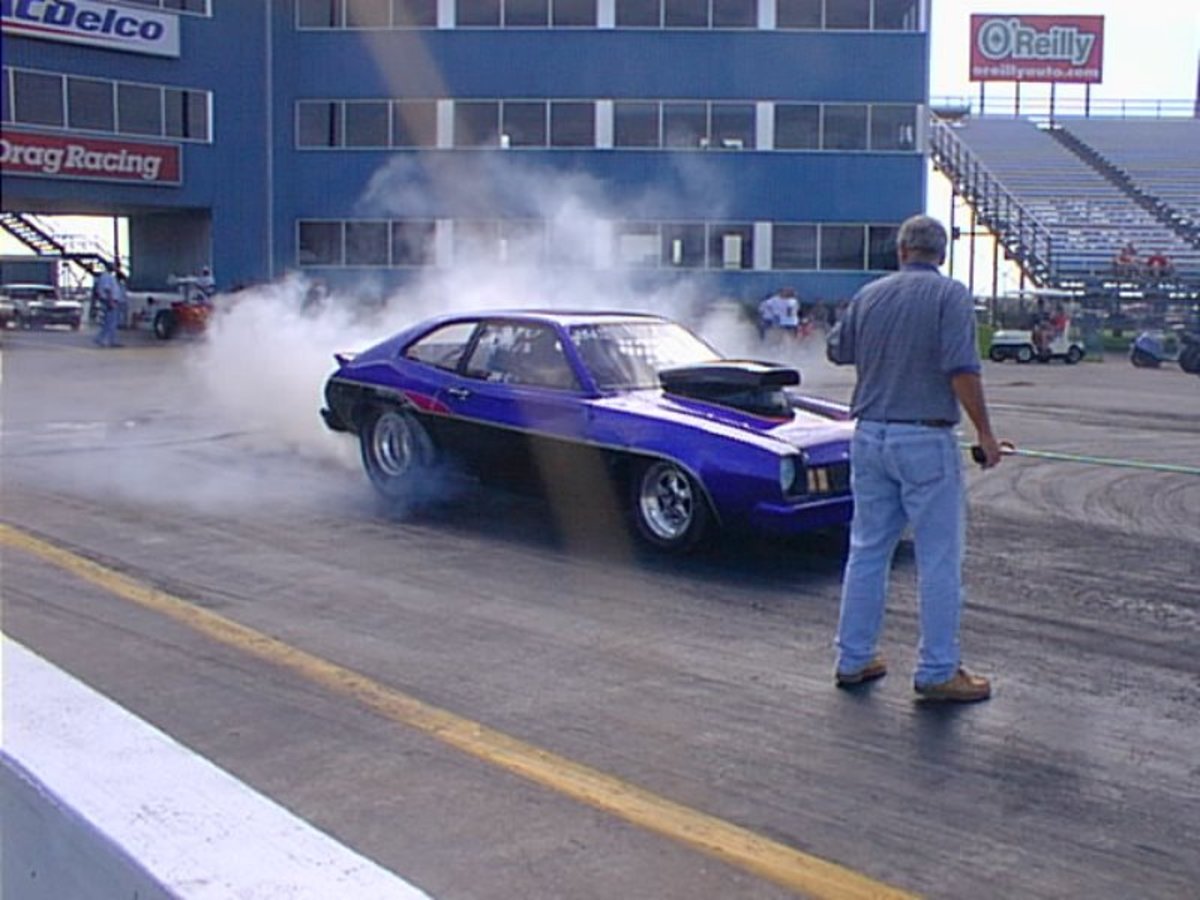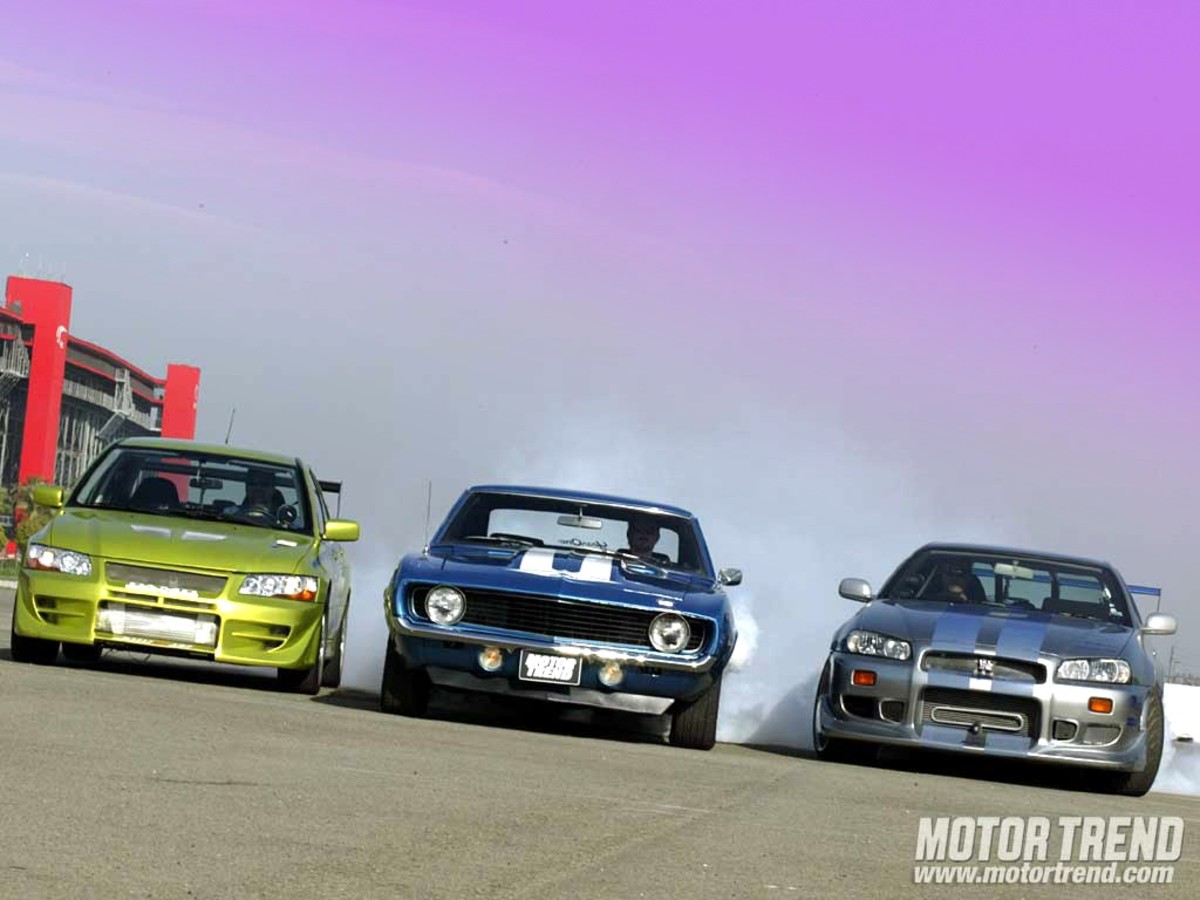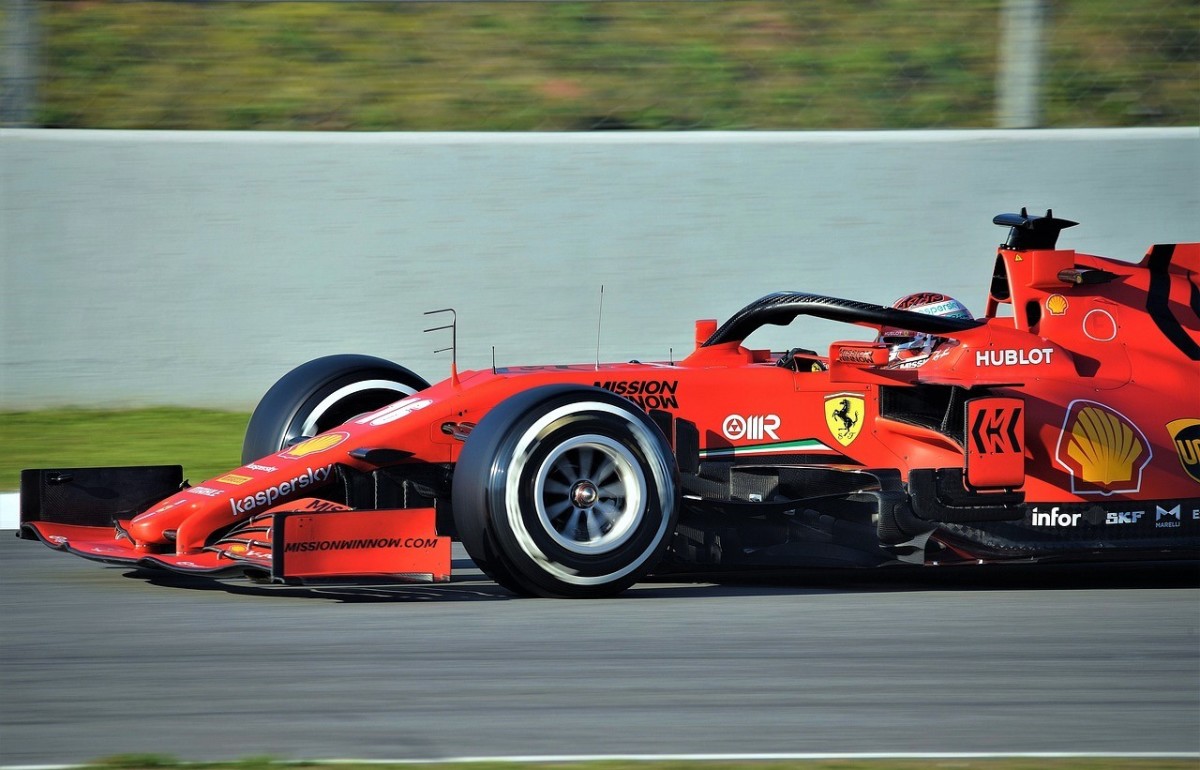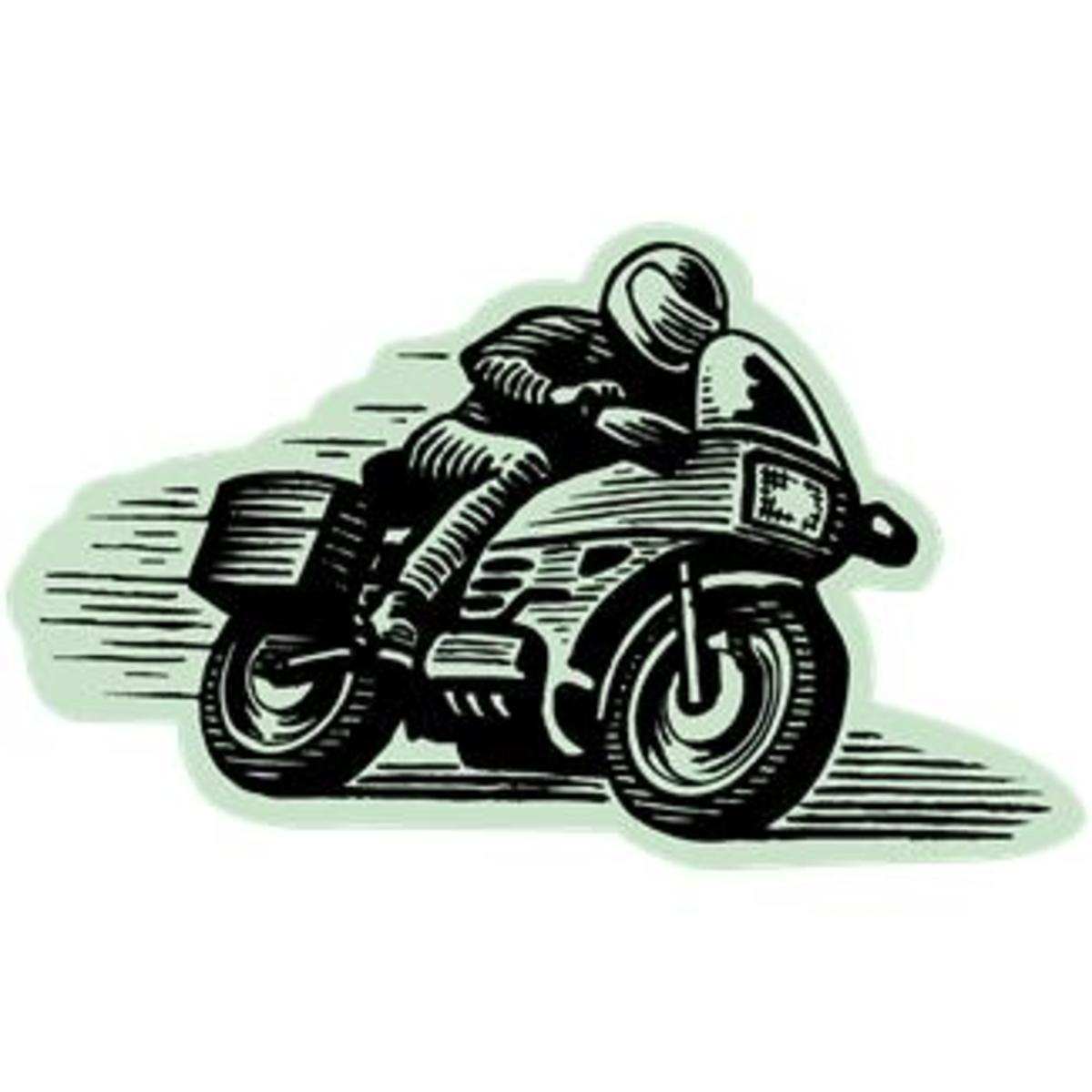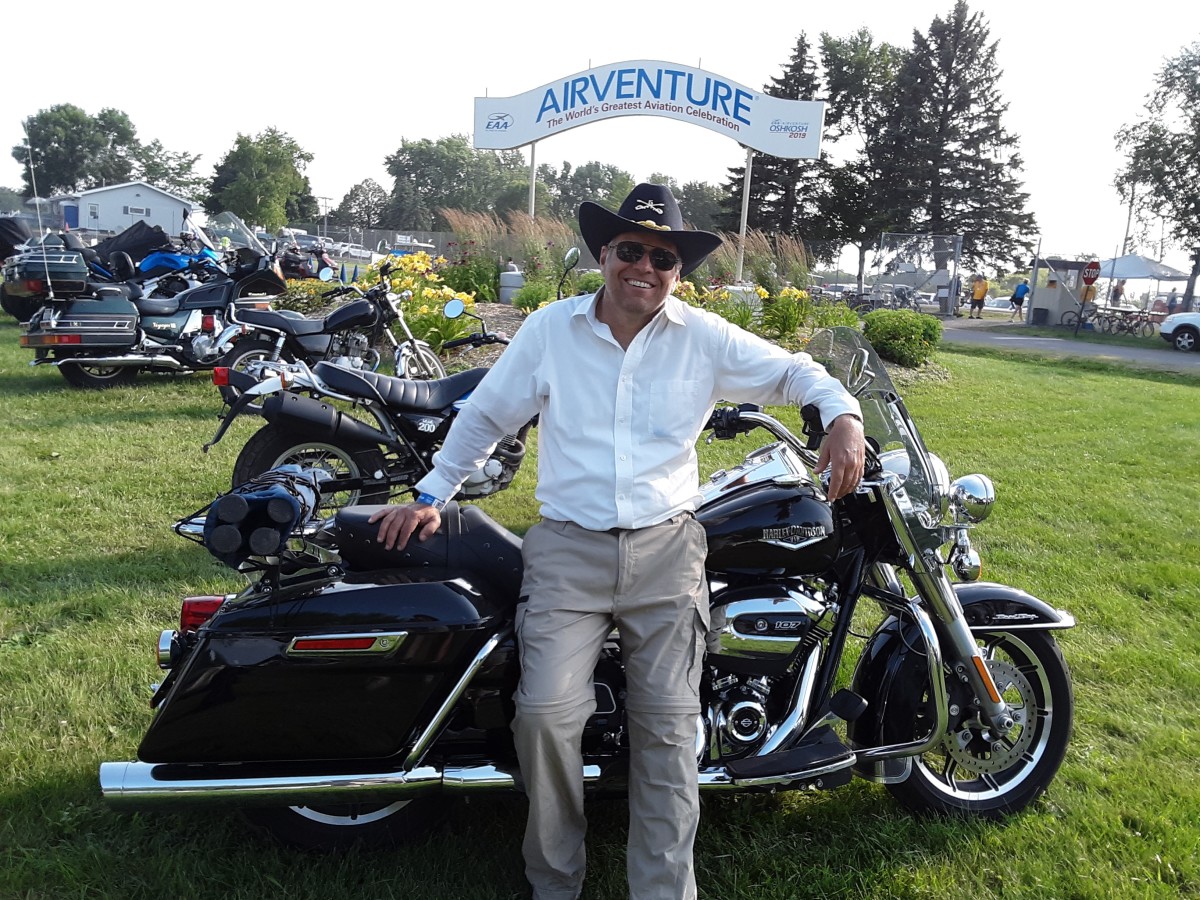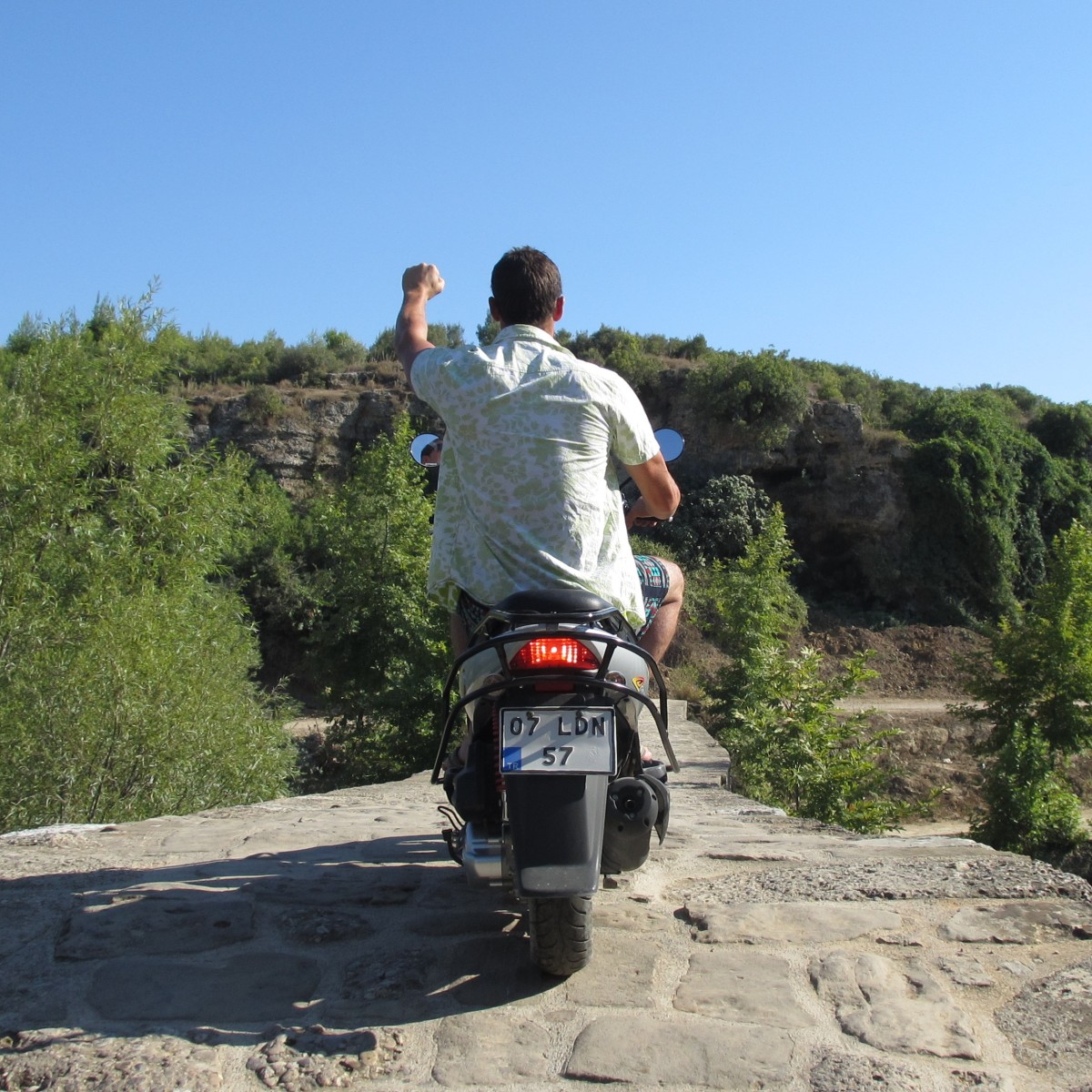Motorcycle Dragracing: Riders to Watch
Racer Dusty Brazel
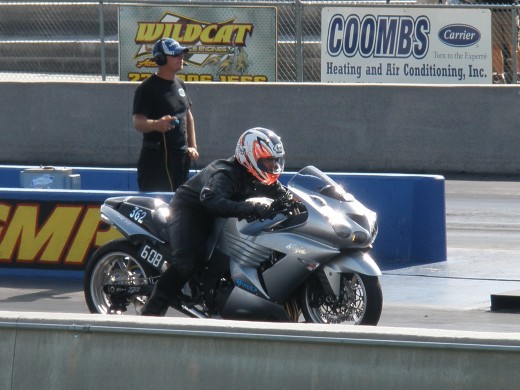
Motorcycle drag racing is a sport that is relatively unheard of to most people, although it is a sport that is continuously growing. The Southeastern Motorcycle Drag Racing Association (SEMDRA) organizes a series of races every year. SEMDRA is sponsored largely by Star Racing of Americus, Georgia. Star Racing is a mail order motorcycle parts store. This year the race track, South Georgia Motorsports Park, in Cecil, Georgia, was fortunate enough to be the choice for the location of the SEMDRA series. This year, six races will be held over three different weekends, with a test and tune night on Friday, followed by a race on Saturday and Sunday. The first race of the season was held Saturday, March 20, 2010. One of the classes of motorcycles to race was a class called Ultra Street.
Each class has to abide by certain rules that are set by the board of directors of SEMDRA. The Ultra Street class boundaries are 1/8 mile in 6.0 seconds. Racers are disqualified if they run faster than a 6.0 and must keep in mind that their reaction time will be added to their final time. All riders are required to have leather gloves, boots that reach above the ankle, Snell 2005 helmet and a one or two piece leather suit. Those riders that choose to wear a two piece suit must make sure that the suit zips together. All motorcycles in the Ultra Street class must be street legal, have a DOT tire with tread, headlight and taillight. It must also have a kill switch, chain guard and front and rear brakes. There must also be a minimum ground clearance of two inches. Each class is given two qualifying/time runs.
Dusty Brazel, a racer out of Norman Park, Georgia, was followed throughout the race on Saturday. He races a silver 2008 Kawasaki ZX-14. During the qualifying runs he qualified fifth out of sixty-four racers. His first qualifying run was a 6.014 at 113.56 mph with a reaction time of -.063. He won the race by .2065 against racer 2301, who ran a 6.088 at 118.81 mph with a reaction time of .069. The second qualifying round was a much closer race. Brazel ran a 6.035 at 108.66 mph with a reaction time of .023. His competitor, racer 898 ran a 5.949 at 126.93 mph with a reaction time of 0.128. The reason racer 898 lost was because he broke out, which means he ran faster than a 6.0. The qualifying runs started at roughly 10:00 am. The problem with races in South Georgia is that a racer may run his times exactly during the cooler morning hours but as the day progresses and the temperature increases the speed of the motorcycles usually slows down a little.
Drag racing requires a high level of concentration. During a race, the rider’s reaction time is crucial to their success. During an Ultra Street drag race, there is a light called a Christmas tree. To start the race, the racers have a pre-stage light and a stage light. Once the racer pulls up and activates the pre-stage light, he/she must pull up another one to two inches to activate the stage light. Once both racers have activated the stage light, the track official activates the Christmas tree. In Ultra Street, all three yellow lights are simultaneously lit followed by the green light. Reaction time is based on how quickly a rider leaves the line after the green light is flashed. Weinberg (2007) defines concentration as “(a) focusing on the relevant cues in the environment (selective attention), (b) maintaining that attentional focus over time, (c) having awareness of the situation, and (d) shifting attentional focus when necessary” ( p. 367). A successful rider focuses on the Christmas tree. He/she is able to block out the distractions that are present in the environment. The rider is able to maintain their focus on their performance by constantly monitoring RPM levels. Although, the rider is concentrated on their own performance they are also aware of the racer beside them. This awareness leads to the fourth part of concentration. The rider is able to shift their focus to their competition in order to figure out if they should speed up or slow down. The ability to concentrate is a crucial skill that racers must possess. Dusty Brazel proved through the following rounds that he is in touch with his ability to concentrate.
The first round of the race began around 3:00 pm for the Ultra Street class. Brazel, racer 362, won this round due to an excellent reaction time of .036. His running times were slower with a 6.228 at 101.58 mph, compared to racer 900, who ran a 6.193 at 119.07 mph with a .144 reaction time. Brazel won the round by .0738. The second round started around 5:00 pm. Brazel won once again because of his reaction time of .042. He ran a 6.112 at 112.70 mph. His competition, racer 339, ran a 6.015 at 115.18 mph with a .162 reaction time. Brazel won the second round by .01239. The third round proved to be Brazel’s best reaction time of the day, with a .005, which is nearly perfect. As the rounds progress the time between rounds decreases. This does not leave much time for mechanical malfunctions to occur. The third round began around 6:00 pm. Brazel ran a 6.087 at 118.23 mph. Racer 280 lost with a 5.943 at 110.01 mph with a reaction time of .145. The next round was the semi-finals with four bikes left in the race. This round began around 6:50 pm. Brazel placed fourth in the race after losing during the semi-finals with a 5.963 at 115.52 mph with a reaction time of .080. Racer 2090 beat Brazel by .0161 with a 6.025 at 120.88 mph with a reaction time of .034. Although, Brazel placed fourth in the first race of the 2010 SEMDRA series, he accumulated enough points to be in third place of the Ultra Street class for the entire series. Points are based on a rider’s times plus if the rider places during the race. At the end of the series, which will be October 16, 2010, the total points are calculated for each rider and a purse is given to the winner. Runner-ups also receive a monetary award.
Motorcycle drag racers experience a surge of arousal during the seconds before the race begins. If a racer is too anxious, he/she may begin before the green light flashes. This results in disqualification. Anyone could see how important it is for a rider to be in touch with themselves in order to reduce anxiety and arousal to a positive level that is conducive to successful racing. As with all athletes, racers can successfully control anxiety and arousal with anxiety-reducing techniques. Weinberg (2007) discusses the loss of coordination and slowed movement that occurs with high levels of anxiety (p. 276). Many times, a rider cannot regroup quick enough to make a good run after a faulty start. A successful racer is able to control their anxiety levels. One very easy type of anxiety reduction technique that racers could use is breath control. “Breath control is one of the easiest, most effective ways to control anxiety and muscle tension (Weinberg, 2007, p. 277). Anxiety reduction is a very important aspect of successful motorcycle drag racing.
Motorcycle drag racing is a very interesting and addictive sport. It is also a very dangerous sport. Wrecks can occur at any time and can be caused by anything from mechanical malfunctions to inexperienced riders. When a rider is involved in a wreck, the psychological outcome can be full of fear and anxiety. Some riders never return to the motorcycle after a wreck. Although there were no wrecks during the first race of SEMDRA 2010, it was very interesting to follow Dusty Brazel. Brazel was involved in a high impact wreck in May 2009 at U.S. 19 Drag strip in Albany, Georgia. An inexperienced rider did not follow rules and as a result hit Brazel at 120 mph. Brazel luckily walked away from the wreck with only minor injuries although his motorcycle was ruined. For Brazel, the next few races were full of anxiety which he has since learned to control. As with all injuries or problems, Brazel probably went through the five-stage grief response process in response to his wreck. Brazel adapted a positive outlook on his situation and was able to move forward and continue racing. “The stages of grief response are denial, anger, bargaining, depression, and acceptance" (Weinberg, 2007, p. 453). SEMDRA 2010 proved that Brazel is more comfortable than ever on the motorcycle despite past failures or problems.
SEMDRA is full of excitement, speed and competition. Most riders display a high level of skill in the sport they love and therefore continuously draw new fans in with every race. Hopefully, Brazel will continue to excel and impress onlookers throughout the rest of the SEMDRA 2010 series in the Ultra Street class. Sponsorship could be just around the corner for this talented young racer.
References
Weinberg, R.S., & Gould, D. (Ed.). (2007). Foundations of sport and exercise psychology. (4th ed.)Champaign, IL: Human Kinetics.

